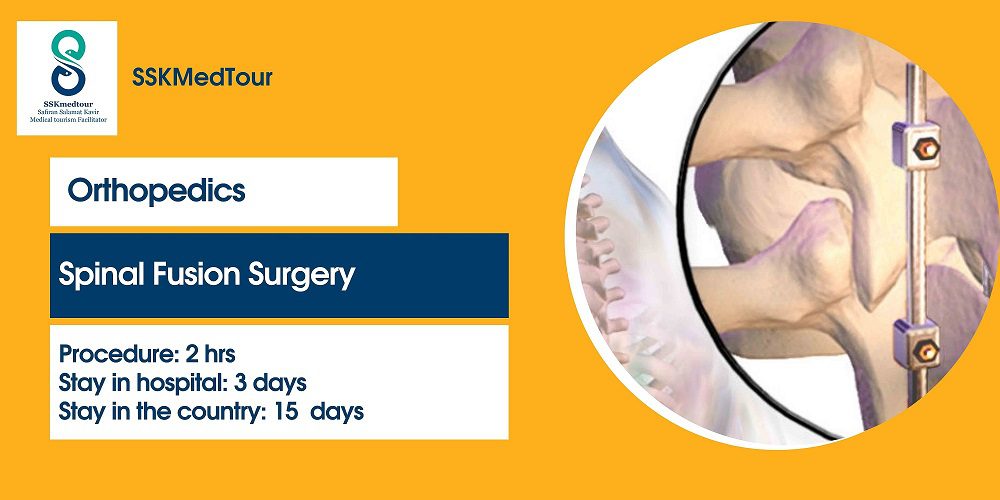
What Is Spinal Fusion?
Spinal fusion is surgery to join two or more vertebrae into one single structure. The goal is to stop movement between the two bones and prevent back pain. Once they’re fused, they no longer move like they used to. This keeps you from stretching nearby nerves, ligaments, and muscles that may have caused discomfort.
Why You Need This Surgery
If medicines, physical therapy, and other treatments (like steroid injections) haven’t helped your back pain, this surgery might be an option. Doctors usually only recommend it if they know exactly what’s causing the problem.
Spinal fusion might help you feel better if your back pain is caused by:
- Degenerative disk disease (the space between disks narrows; sometimes they rub together spaces)
- Fracture (broken spinal bone)
- Scoliosis — your spine curves abnormally to one side
- Spinal stenosis (narrowing of the spinal canal)
- Spondylolisthesis (forward shifting of a spinal disk)
- Tumors or spine infection
How to Prepare
The week before your surgery, you may have some blood tests and spinal X-rays if you haven’t had any recently.
Your healthcare team will go over the details of your procedure. Don’t be afraid to ask questions if you don’t understand something. Your surgeon wants you to be prepared.
Here are some things to think about in the days prior to your surgery:
- Know when to arrive at the surgery center. You’ll need someone to drive you and take you home.
- Get a list of the medicines you can or can’t take in the days before surgery. Some drugs, like aspirin or other anti-inflammatory drugs, may be unsafe. Never stop taking any medicines without your doctor’s OK.
- Find out if you can eat or drink anything before your procedure.
- Get your home ready. You’ll need raised toilet seats, shower chairs, slip-on shoes, reachers, and other aids.
How Is the Surgery Performed?
Spinal fusion can be done one of two ways.
- Anterior lumbar interbody fusion: Your doctor goes in through your belly
- Posterior fusion: Your doctor goes in from the back
After they make the incision, they move the muscles and structures to the side to see your spine. The joint or joints between the damaged or painful disks are removed.
They can use screws, rods, or pieces of bone (called a graft) from another part of your body to connect the disks and keep them from moving. A bone graft that comes from your body is usually taken from your hip or pelvis. Bone from another person is called a donor graft. Some doctors place a substance called bone morphogenetic protein into the spine instead. It helps to stimulate bone growth.
The surgery can take several hours.
Could There Be Complications?
Every surgery comes with some type of risk. These have been linked to this type of procedure:
- Bleeding
- Blood clots
- Infection
- Pain
- Risks from anesthesia
Other potential problems include:
- Nerve injury: Numbness and tingling in a leg. You might lose movement, but that’s rare.
- Pseudoarthrosis: Sometimes the fusion doesn’t work. After a few months, your back pain may return.
- Donor bone graft complications like infection or tissue rejection.
You can help prevent some of these issues by watching for the warning signs of infection. Tell your doctor right away if you have:
- A lot of swelling, redness or drainage by your wound
- Fever over 100 degrees F
- Increased pain
- Shaking chills
Recovering From Spinal Fusion
After surgery, you’ll be in the hospital for several days. How long depends on many things, like your general fitness level and if you have any other medical conditions. Most people stay 4 days. You might get out sooner, or you might have to stay about a week.
During this time, you’ll be connected to machines that monitor your heart and make sure your body is doing OK. You’ll also have a lot of tubes attached to you:
- One, called an IV, goes in your arm to give you fluids, antibiotics, and sometimes pain medicines.
- Some people get pain medicines through a tube in the back. This is called an epidural catheter.
- Another tube, also called a catheter, connects to where urine normally leaves your body. You’ll have this for the first few days so you don’t have to get up to go to the bathroom. You might find it unpleasant, or you might not even feel it. But it’s important to that you remain still so your back can heal.
During your stay, you’ll meet with physical and occupational therapists who will teach you how to get out of bed, into a chair, and walk again. Before your doctor sends you home, you’ll have spinal X-rays to make sure the fusion is doing OK. You’ll return for to have stitches removed in about 10 days. After that you’ll have follow-up appointments, usually in about 4 to 6 weeks, 6 months, 12 months and 24 months.
Recovering from back surgery takes commitment and work. It could take 6 months to a year for your back to fully heal. You need to stick with physical therapy after you leave the hospital. Your doctor will tell you how often you need to go. To protect your back as you get better, follow these tips for the first 6 months: Avoid twisting, bending, and heavy lifting — nothing more than a gallon of milk! So go ahead — leave the dishes and laundry to your partner or kids.


No comment